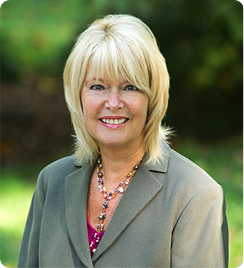
Malia Obama will attend Harvard University, but first she’s taking a gap year. How she’ll use that time is not yet known, but many midlife adults are saying, “I want one too”. If you never scheduled a gap year or if it was a long time ago, how might a break like this benefit you?
Midlife is a perfect time to take stock, change direction, sample something new. Often you operate at supersonic speed in work and home. When asked what you really want, you are so unfamiliar with choices that you can’t reply. You know you want some changes, but you don’t know what else exists.
Exiting the daily routine exposes you to new ways of living and working. For young people, gap year traditions can occur between high school and college or become a “backpacking trip though the world” between college and career. Both provide a kinesthetic education in whatever intrigues the explorer. Usually there is an intention for the break: something to learn, experience, or decide. Rather than being frivolous, a gap is a creative method of uncovering new answers for yourself.
When I was 19 I designed some gap years. I studied in Bogota for a semester, fell in love with Colombia and a man, and invented a reason to remain. I landed jobs teaching ESL in Medellin and Barranquilla and stayed two years.
For me that experience was life changing. I was immersed in a new culture and language. I gained confidence and experience in teaching and I was ignited by the travel bug. So personally and professionally I benefited. Since then I have created other opportunities to gap it: refugee work in Thailand, stay at home parenting, overseas Spanish study, and extensive post graduate education.
So are gaps just for the young? Have you missed your chance? Do you have to wait until retirement to get out and do something different? I hope not. What if you could structure something now? What would you like to do? How can you make it happen?
Some careers have gaps or sabbaticals built into their life cycles: higher education, ministry, even school teachers have the summers off. Some people choose their career based on its flexibility for family or self. Is flexibility a benefit you can negotiate in a job offer, or prioritize in your search or even ask for now?
A midlife gap has to be more than a long vacation. You can enter into a discerning process of what personal answers you are seeking, what career information or experience you require, or what transformation is necessary for your next level of growth.
Sometimes the gap can be a lateral move in your organization. It could be a year off to get another degree or certification. It can be a planned interlude between jobs. While the Peace Corps has a mostly young face, it and other volunteer opportunities serve the gap purpose at any age. After my one year VISTA job ended, I went back to graduate school and also volunteered in a Thai refugee camp. Those were the days… And it doesn’t have to be a year. With clear boundaries and goals a gap experience can be beneficial for one, three or six months.
Stacy is a CPA who is itching for a change in work and life. She wants to possibly move out West and work for a larger organization. Over time Stacy identifies several government and corporate entities in California, Arizona and Utah that use the services of a CPA. She contacts managers and learns about their unmet needs. She negotiates a temporary reduction in hours and the capacity to work virtually in her current job. Once she obtains an offer, Stacy creates the space to move out West and work part-time. This gives her more information so that she can design a career vision that better fits.
Finding ways to think outside the box so that both you and the business prosper is challenging and compelling. Without current gap institutions, midlifers need to design opportunities instead of wishing they were college students or retirees. Our inflexible systems can be tweaked by taking risks to the betterment of all. The risk of not acting is to burnout and waste your talents.
Ethan Knight, Executive Director, American Gap Association, www.americangap.org, is a fan of the saying:
“Mankind can only dream as big as we’ve seen”
Unknown
So to do it, you have to see it, experience it, try it out. Perhaps you can pioneer gap years for midlife and become a role model in this transformative endeavor.
Design your personal gap experience:
What is missing in your life?
What do you want to change?
Identify 3-5 intentions
Create experiences
Evaluate the data
Incorporate the learning
Take your risk and see you on the path!















